Cat pancreatitis is an inflammation of the pancreas, which can be acute or chronic. It often causes nonspecific symptoms like lethargy and vomiting. A cat pancreatitis chart PDF provides a concise guide for identifying signs, understanding treatments, and monitoring recovery, helping pet owners manage the condition effectively.
1.1 Understanding Pancreatitis in Cats
Pancreatitis in cats is an inflammation of the pancreas, which can be acute or chronic. Acute pancreatitis is often reversible, while chronic cases involve long-term inflammation. Both forms can cause nonspecific symptoms like lethargy, vomiting, and weight loss. A cat pancreatitis chart PDF helps pet owners recognize these signs early and understand the condition better. It also aids in tracking progress and managing care effectively. Early diagnosis is crucial, as pancreatitis can lead to severe complications if left untreated. The chart serves as a handy reference for identifying symptoms and guiding proper management strategies.
1.2 Importance of a Cat Pancreatitis Chart PDF
A cat pancreatitis chart PDF serves as an essential reference tool for pet owners. It provides a clear, organized overview of symptoms, treatment options, and recovery tracking. By using the chart, owners can quickly identify potential signs of pancreatitis, such as lethargy or vomiting, and monitor their cat’s progress effectively. This resource is particularly valuable for managing chronic cases, where tracking dietary changes and treatment responses is crucial. The chart also emphasizes the importance of early diagnosis and timely veterinary care, helping to improve outcomes for cats with pancreatitis.
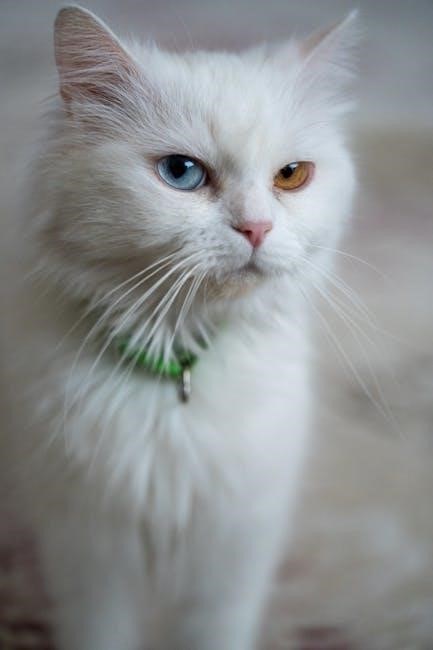
Symptoms of Feline Pancreatitis
Cats with pancreatitis often show lethargy, loss of appetite, and occasional vomiting. Chronic cases may present with weight loss and intermittent digestive issues, varying in severity.
2.1 Common Clinical Signs
Cats with pancreatitis often exhibit lethargy, loss of appetite, and occasional vomiting. These signs are nonspecific but are the most frequently observed. Weight loss, dehydration, and abdominal discomfort may also occur, especially in chronic cases. Some cats develop diarrhea or show signs of pain, though this is less common. Fever and jaundice are rare but possible. Monitoring these signs with a cat pancreatitis chart PDF can help identify patterns and severity, aiding early diagnosis and treatment; Recognizing these indicators is crucial for ensuring timely veterinary care and improving outcomes for affected cats.
2.2 Less Common Symptoms
While lethargy and vomiting are common, some cats with pancreatitis exhibit less typical signs. Fever, jaundice, and abdominal pain are less frequently observed but can indicate severe inflammation. Diarrhea, though uncommon, may occur, especially in chronic cases. Weight loss and dehydration are also possible but are often gradual. These less common symptoms can vary in severity and may overlap with other conditions, making diagnosis challenging. Tracking these signs using a cat pancreatitis chart PDF helps identify unusual patterns and ensures comprehensive monitoring, aiding in early detection and appropriate care for affected cats.
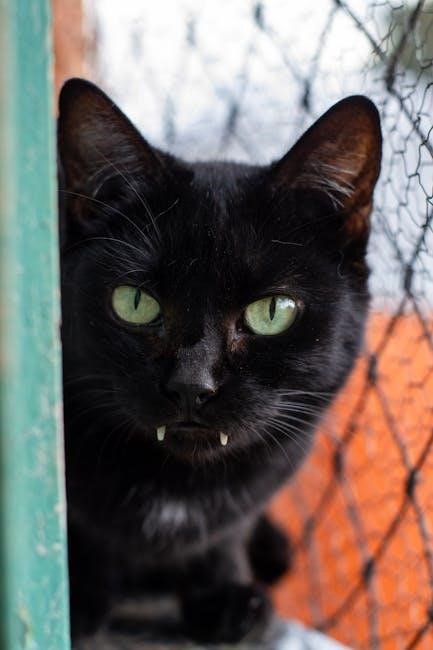
2.3 Differences in Symptoms Between Acute and Chronic Pancreatitis
Acute pancreatitis in cats often presents with sudden onset of severe symptoms, such as vomiting, abdominal pain, and lethargy, though these may not always be evident. Chronic pancreatitis, however, typically manifests with milder, intermittent signs like occasional vomiting, weight loss, and anorexia. Some cats with chronic cases may show no obvious symptoms at all, making early detection challenging. A cat pancreatitis chart PDF can help track these subtle variations, enabling owners to identify patterns and seek timely veterinary care, which is crucial for managing both forms of the condition effectively.
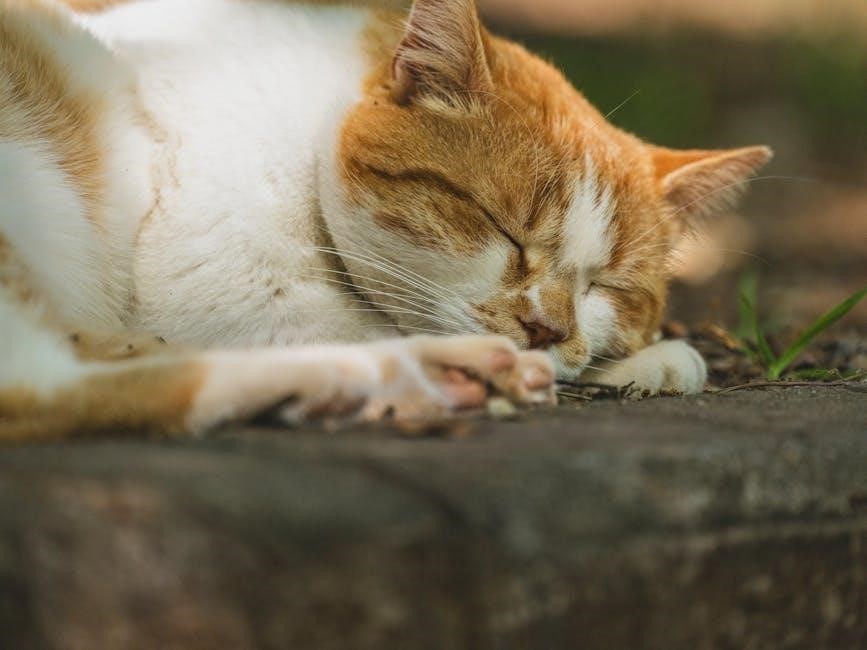
Diagnosis of Pancreatitis in Cats
Diagnosis involves a combination of physical exams, blood tests, and imaging techniques like ultrasound. The Spec fPL test is highly specific for feline pancreatitis. A cat pancreatitis chart PDF can help track symptoms and guide the diagnostic process, ensuring accurate and timely identification of the condition.
3.1 Blood Tests for Pancreatitis
Blood tests are crucial for diagnosing pancreatitis in cats. These include evaluating liver enzymes, pancreatic lipase levels, and complete blood counts. Elevated lipase levels may indicate pancreatic inflammation. However, accuracy can vary, especially in mild cases. The feline pancreas-specific lipase (Spec fPL) test is highly sensitive and specific for diagnosing pancreatitis. Blood panels help rule out other conditions and assess overall health. A cat pancreatitis chart PDF can help track blood test results, ensuring comprehensive monitoring and accurate diagnosis. Regular blood work is essential for managing the condition effectively.
3.2 Imaging Techniques for Diagnosing Pancreatitis
Imaging techniques play a key role in diagnosing pancreatitis in cats. Abdominal X-rays can reveal complications like pancreatitis-related masses or obstructions. Ultrasound is non-invasive and provides detailed images of the pancreas, helping identify inflammation or enlargement. In severe cases, CT or MRI scans may be used for a more detailed evaluation. These imaging methods, combined with blood tests, help confirm the diagnosis. A cat pancreatitis chart PDF can assist in interpreting imaging findings and correlating them with clinical symptoms, ensuring accurate diagnosis and effective treatment planning.
3.3 The Role of Feline Pancreas-Specific Lipase (Spec fPL) Test
The Feline Pancreas-Specific Lipase (Spec fPL) test is a highly sensitive and specific blood test for diagnosing pancreatitis in cats. It measures lipase enzymes produced by the pancreas, which rise in cases of inflammation. The Spec fPL test is particularly useful for confirming pancreatitis when clinical signs and imaging are inconclusive. It is non-invasive and provides quick results, making it a valuable diagnostic tool. While it is highly accurate for moderate to severe cases, sensitivity may be lower in mild pancreatitis. A cat pancreatitis chart PDF can help interpret Spec fPL results and guide further diagnostic or treatment steps.
Treatment Options for Feline Pancreatitis
Treatment for feline pancreatitis includes fluid therapy, medications, and dietary changes. A cat pancreatitis chart PDF helps guide treatment plans, ensuring effective management of symptoms and recovery.
4.1 Fluid Therapy and Medications
Fluid therapy is crucial for rehydrating cats with pancreatitis, maintaining electrolyte balance, and supporting organ function. Medications may include anti-nausea drugs, pain relievers, and anti-inflammatory agents. A cat pancreatitis chart PDF helps track fluid intake and medication schedules, ensuring consistency and accuracy in treatment. This approach supports recovery and prevents complications, while the chart provides a clear guide for managing symptoms effectively.
4.2 Pain Management Strategies
Pain management is essential for cats with pancreatitis to improve comfort and quality of life. Common strategies include the use of analgesics like buprenorphine or fentanyl patches. A cat pancreatitis chart PDF can help track pain levels and responses to medication, ensuring adjustments are made as needed. Monitoring for signs of discomfort, such as lethargy or hiding, is also crucial. Effective pain control supports recovery and reduces stress, making it a key component of overall care.
4.3 Surgical Interventions in Severe Cases
Surgical intervention is typically reserved for severe cases of feline pancreatitis, such as pancreatic abscesses or necrosis. In these situations, surgery may involve removing diseased tissue or addressing complications like bile duct obstructions. A cat pancreatitis chart PDF can help identify when surgical intervention is necessary and guide post-operative care. Monitoring recovery through the chart ensures proper healing and reduces the risk of further complications. Surgery is a critical option for cats with life-threatening pancreatic issues, and the chart provides a structured approach to managing these cases effectively.
Dietary Management for Cats with Pancreatitis
Dietary management is crucial for cats with pancreatitis, focusing on low-fat, easily digestible foods to reduce pancreatic strain. A cat pancreatitis chart PDF provides guidance on ideal diets, helping owners make informed decisions to support their cat’s recovery and long-term health.
5.1 Foods to Avoid for Cats with Pancreatitis
Cats with pancreatitis should avoid high-fat foods, as they can trigger or worsen inflammation. Table scraps, fatty meats, and fat supplements are particularly harmful. Avoid diets high in carbohydrates or processed ingredients, as they may exacerbate pancreatic stress. Foods that can cause digestive upset, such as dairy or spicy ingredients, should also be eliminated. A cat pancreatitis chart PDF can help identify harmful foods and guide dietary choices, ensuring your cat receives a balanced, low-fat diet for optimal recovery and long-term health management;
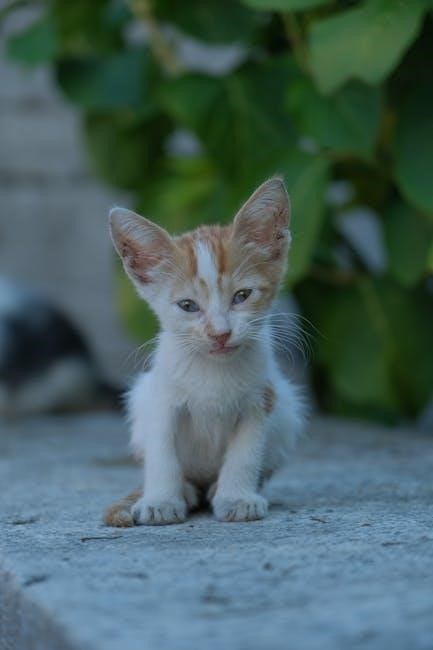
5.2 Recommended Diets for Managing Pancreatitis
A low-fat, high-quality protein diet is essential for managing feline pancreatitis. Look for foods with moderate fat content (around 20-25% on a dry matter basis) and avoid fillers or by-products. Novel protein sources, such as chicken or turkey, can reduce inflammation. Some cats benefit from a low-carbohydrate diet, while others may require a hypoallergenic or hydrolyzed protein diet. Consult your veterinarian to determine the best option for your cat. A cat pancreatitis chart PDF can help track dietary changes and ensure consistency in your cat’s nutrition for optimal recovery and long-term health.
5.3 Transitioning to a Low-Fat Diet
Transitioning your cat to a low-fat diet is crucial for managing pancreatitis. Start by gradually introducing the new food over 7-10 days to prevent digestive upset. Choose a high-quality, low-fat diet with moderate protein content, ensuring it meets your cat’s nutritional needs. Avoid sudden changes and consult your veterinarian to tailor the diet to your cat’s specific condition. A cat pancreatitis chart PDF can help track dietary adjustments, ensuring a smooth transition and maintaining consistency. This structured approach supports your cat’s recovery and reduces the risk of recurrence, promoting long-term health and well-being.
Monitoring and Follow-Up Care
Regular monitoring and follow-up care are essential for managing your cat’s pancreatitis. Use a cat pancreatitis chart PDF to track progress and adjust the care plan as needed, ensuring continuous improvement in your cat’s health.
6.1 Regular Veterinary Check-Ups
Regular veterinary check-ups are crucial for managing cat pancreatitis. These appointments allow your vet to monitor your cat’s condition and adjust treatment plans. A cat pancreatitis chart PDF can help track your cat’s progress, ensuring consistent care and early detection of any changes. By maintaining open communication with your vet, you can ensure your cat receives the best possible care and improves their quality of life. Regular check-ups are key to managing both acute and chronic cases effectively.
6.2 Tracking Progress with a Pancreatitis Chart
A cat pancreatitis chart PDF is an essential tool for tracking your cat’s progress. It helps monitor symptoms, such as vomiting or lethargy, and records changes in appetite or weight. The chart also allows you to document blood test results and imaging findings, providing a clear overview of your cat’s condition. Regularly updating the chart ensures you and your vet can identify trends and adjust treatment plans promptly. This organized approach helps manage pancreatitis effectively, ensuring your cat receives the best care and improving their quality of life.
6.3 Adjusting Treatment Plans as Needed
Regular veterinary check-ups and progress tracking with a cat pancreatitis chart PDF enable timely adjustments to treatment plans. As your cat’s condition evolves, medications, diets, or therapies may need modification. For example, if symptoms persist, pain management strategies or nutritional adjustments could be refined. The chart helps identify patterns, ensuring interventions are tailored to your cat’s specific needs. Collaborating with your vet allows for proactive changes, optimizing your cat’s comfort and recovery; Adjustments are crucial for managing both acute and chronic cases, ensuring the best possible outcome and improving your cat’s quality of life.
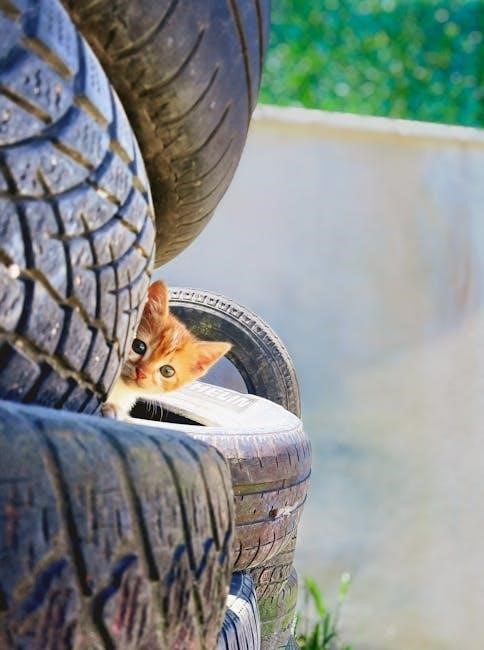
The Role of the Cat Pancreatitis Chart PDF
The cat pancreatitis chart PDF serves as a vital resource for managing feline pancreatitis. It provides a quick reference guide for identifying symptoms, understanding treatment options, and tracking recovery progress, ensuring your cat receives timely and appropriate care.
7.1 Benefits of Using a Pancreatitis Chart
Using a cat pancreatitis chart PDF offers numerous benefits for pet owners and veterinarians. It provides a clear, organized format for tracking symptoms, treatment progress, and recovery milestones. The chart helps identify early warning signs, ensuring timely medical intervention. It also serves as a communication tool between owners and vets, promoting consistent care. By maintaining a detailed record, owners can monitor their cat’s condition effectively and make informed decisions. The chart’s visual layout simplifies complex information, making it easier to understand and act upon. This resource is invaluable for managing both acute and chronic cases, improving overall care and outcomes for feline pancreatitis patients.

7.2 How to Use the Chart Effectively
To use the cat pancreatitis chart PDF effectively, start by documenting your cat’s symptoms daily, such as vomiting, lethargy, or appetite changes. Track progress over time to identify patterns and trends. Use the chart to monitor treatment responses, including changes in diet or medication. Regularly review the chart with your veterinarian to ensure consistent care and adjust strategies as needed. The chart also serves as a quick reference for recognizing early warning signs, enabling prompt intervention. By updating it consistently, you can ensure your cat receives proactive and tailored management, improving their quality of life and recovery outcomes.
7.3 Downloading and Referencing the Chart
Downloading the cat pancreatitis chart PDF is a straightforward process. Visit trusted veterinary websites or platforms offering pet health resources. Once downloaded, print or save it for easy access. Refer to the chart regularly to track your cat’s symptoms, treatment progress, and dietary adjustments. Use it during veterinary visits to ensure clear communication and informed decision-making. The chart’s organized layout allows quick identification of key information, such as symptom severity and treatment options. By keeping it handy, you can provide consistent care and ensure your cat’s needs are met effectively throughout their recovery journey.
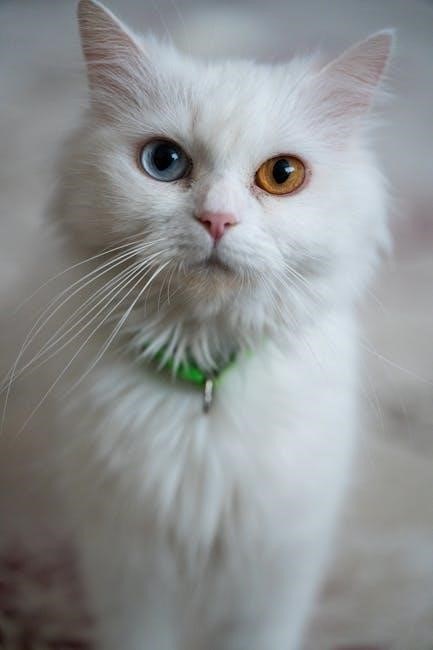
Prognosis and Long-Term Outlook
The prognosis for cats with pancreatitis varies. Early diagnosis and treatment improve outcomes. Acute cases may recover fully, while chronic cases require ongoing management. Regular monitoring and dietary adjustments, guided by a cat pancreatitis chart PDF, help ensure the best long-term quality of life for affected cats.
8.1 Factors Influencing Recovery
Several factors influence a cat’s recovery from pancreatitis. The severity of the condition, whether acute or chronic, plays a significant role. Early diagnosis and appropriate treatment, including fluid therapy and dietary changes, greatly impact outcomes. The cat’s overall health, presence of concurrent diseases, and adherence to veterinary care also affect recovery. Using a cat pancreatitis chart PDF can help track progress and ensure consistent care, improving the likelihood of a successful recovery and better long-term health for the cat.
8.2 Managing Chronic Pancreatitis
Managing chronic pancreatitis in cats requires a tailored approach to reduce inflammation and improve quality of life. A low-fat diet is essential to minimize pancreatic strain, and foods high in fat or table scraps should be avoided. Pain management strategies, such as medication or alternative therapies, can help alleviate discomfort. Regular veterinary check-ups and monitoring for complications are crucial. Using a cat pancreatitis chart PDF allows owners to track their cat’s symptoms, dietary adjustments, and treatment responses, ensuring consistent care and enabling timely adjustments to the management plan.
8.3 Improving Quality of Life for Affected Cats
Improving quality of life for cats with pancreatitis involves a combination of dietary, environmental, and medical strategies. A low-fat diet is crucial to reduce pancreatic stress, while avoiding table scraps and fatty foods helps prevent flare-ups. Pain management, hydration, and anti-nausea medications can enhance comfort. Environmental enrichment, such as providing a calm space, can reduce stress. Regular monitoring using a cat pancreatitis chart PDF helps track progress and adjust treatments. By addressing both physical and emotional needs, owners can significantly improve their cat’s overall well-being and ensure a better quality of life despite the condition.
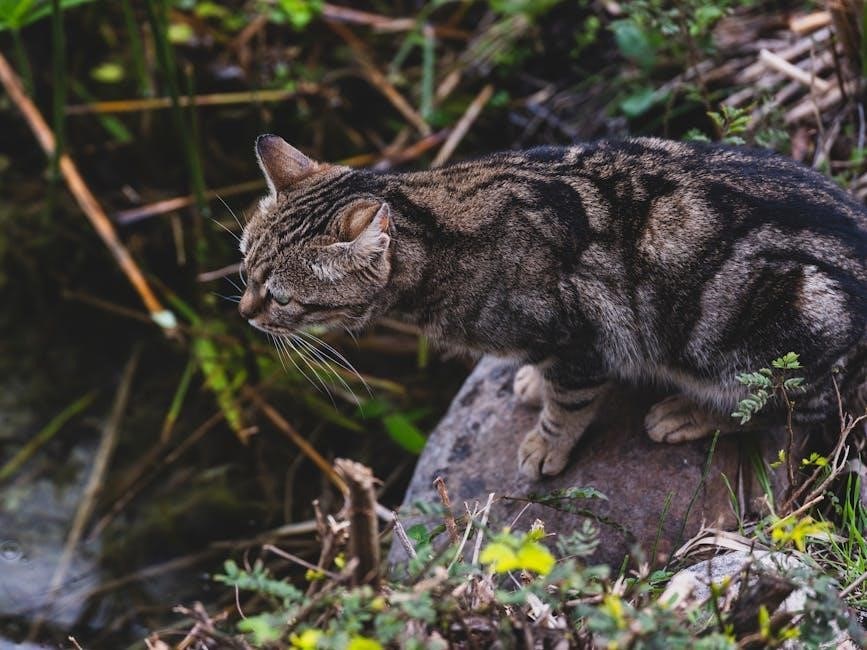
Preventative Measures
Preventing pancreatitis in cats involves a healthy diet, avoiding high-fat foods, and monitoring for early signs of illness. A cat pancreatitis chart PDF helps track risks and ensures timely interventions, promoting overall well-being.
9.1 Reducing the Risk of Pancreatitis
Reducing the risk of pancreatitis in cats involves maintaining a healthy weight, avoiding high-fat diets, and preventing conditions like diabetes or inflammatory bowel disease. Feeding a balanced, low-fat diet and avoiding table scraps can minimize the likelihood of pancreatic inflammation. Regular veterinary check-ups and monitoring for early signs of illness are essential. A cat pancreatitis chart PDF can help track risk factors and ensure proactive care, reducing the chances of developing this condition and improving overall feline health.
9.2 Maintaining a Healthy Lifestyle for Your Cat
Maintaining a healthy lifestyle for your cat involves providing a balanced diet, ensuring regular exercise, and creating a stimulating environment. A high-quality, low-fat diet can help prevent obesity and reduce the risk of pancreatitis. Avoiding table scraps and fatty foods is crucial. Regular veterinary check-ups and monitoring for early signs of illness are essential. A cat pancreatitis chart PDF can serve as a valuable tool for tracking your cat’s health and identifying potential risks early. By fostering a healthy lifestyle, you can significantly improve your cat’s overall well-being and reduce the likelihood of developing pancreatitis.
9.3 Early Recognition of Potential Issues
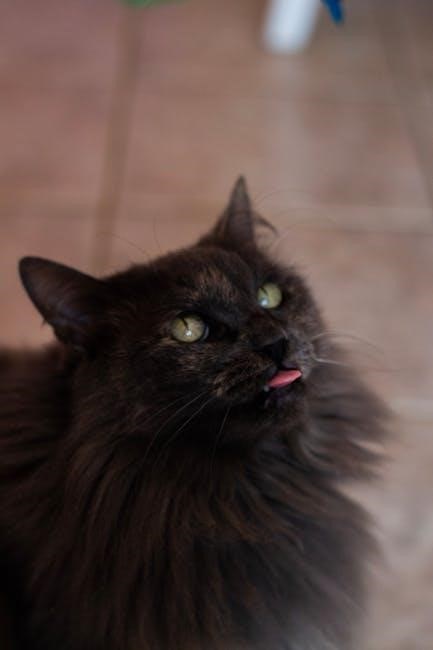
Early recognition of potential issues is critical for managing feline health. Cats with pancreatitis often exhibit subtle symptoms like lethargy, vomiting, or weight loss. Regular monitoring of your cat’s behavior, appetite, and physical condition can help identify these signs early. A cat pancreatitis chart PDF provides a quick reference guide to track changes and detect early warning signs. By staying vigilant and proactive, you can ensure timely veterinary intervention, improving your cat’s prognosis and quality of life. Early detection is essential for effective management of pancreatitis and other related health issues in cats.